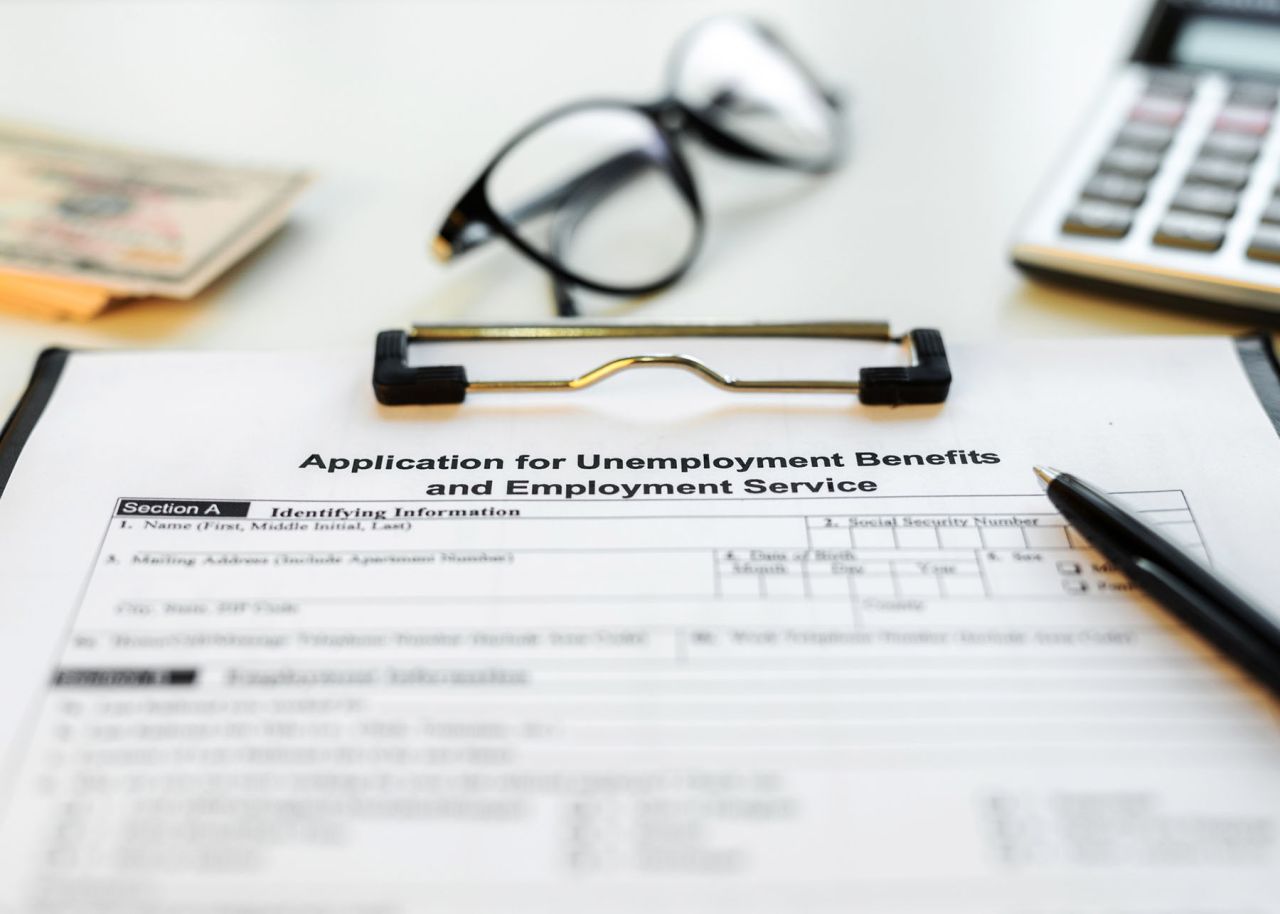Introduction
Between March 2020 and September 2021, the Federal government issued almost $837 billion in total unemployment benefits to support millions who lost jobs during the pandemic.1 The overwhelming number of unemployment claims exposed vulnerabilities and concerns with many state unemployment benefits, and the systems that process them. As of August 2022, only 15 states met a federal requirement to pay out at least 87% of eligible claims within 21 days. Similarly, workers are on average waiting nearly four months to have their appeal of a denial of benefits settled—that’s four times longer than the minimum federal standard.2
Though the percentage of jobless Americans receiving state unemployment benefits has dropped from 76% through early 2021 to 26.8% in August 20223, the looming threat of the next economic recession due to high inflation rates keeps the issue of outdated, legacy unemployment benefits systems paramount.4 As of October 2020, fewer than half of states have modernized their unemployment benefit systems.5 The following unemployment system concerns and lessons learned during the pandemic must serve as the impetus for more states to start their modernization journeys.
Top 3 unemployment benefit system post-pandemic findings
Benefit payment delays
The staggering amount of incoming unemployment claims during the pandemic overwhelmed many state legacy systems, revealing their lack of scalability and outdated technical infrastructures. Some state unemployment benefits systems are still supported by mainframe technology from the 1970s and 1980s and are written with outdated COBOL code.
A recent report from The Hamilton Project revealed that early pandemic unemployment assistance (PUA) checks showed 6–7-week delays in unemployment benefit payments. The adverse effects of long wait times have resulted in claimants’ inability to pay bills, food scarcity, homelessness, and depleted savings.6
Fraudulent payments
Alongside a lax in claim requirements to provide rapid state unemployment benefits issuance during the pandemic, there were other unemployment system issues that attracted criminals to fraudulently apply and receive payments. Between March 2020 and September 2021, over $163 billion in fraudulent unemployment benefits were issued.7 Outdated, legacy systems and processes were responsible for this large sum. And now, some states are justifying modernization funding through retrospective reflection.
The State of Kansas Department of Labor performed an independent, third-party audit to determine the amount of fraudulent unemployment benefits issued between March 2020 and March 2022. The audit revealed that between $441 and $466 million in fraudulent payments were issued. The state has used the audit to justify funding to modernize the system that’s based on 1970s era technology.8 States are also finding that many legitimate claimants were falsely flagged as fraudulent, resulting in longer wait periods pending more in-depth reviews.
Cybersecurity concerns
With cyberattacks evolving and getting more sophisticated, legacy systems and static incident response plans have left states exposed to major threats. Unemployment benefit systems house an array of confidential, personal citizen information that must be protected, and targeted attacks can also shut down systems preventing thousands from receiving critical benefits.
Recently, nine state systems including Washington, D.C. that use the same contractor experienced system outages due to a network cyberattack. This has delayed state unemployment benefits for many citizens. For example, the Tennessee Department of Labor and Workforce Development announced that approximately 12,000 people will not be paid on time.9
Next steps to bolster state unemployment benefit systems
With economic experts predicting another recession, it’s important to reflect on lessons learned from the pandemic and their impact on state unemployment benefits systems. Only then can we understand what needs to change to future-proof unemployment benefits technology and processes, so we do not run into the issues that happened during the pandemic. And, to future-proof, modernization efforts are essential.
In our next article, we’ll provide 4 of the most common modernization obstacles faced during state projects. Part two will share expert advice on how to resolve these issues, or better yet, address them before your agency invests in a major modernization project. Use this link to read "It's time to modernize state unemployment benefit systems: Part 2."
Endnotes
- Greg Iacurci, “Fraud had ‘significant’ role in $163 billion leak from pandemic-era unemployment system,” CNBC, CNBC, May 27, 2022, https://www.cnbc.com/2022/05/27/fraud-had-significant-role-in-163-billion-leak-from-pandemic-era-unemployment-system.html. ↩
- Andrew Stettner, Laura Valle Gutierrez, “A Pandemic Lifeline, Nation’s Unemployment System Is Inadequate and Unprepared for Next Downturn,” TCF, TCF, November 1, 2022, https://tcf.org/content/report/a-pandemic-lifeline-nations-unemployment-system-is-inadequate-and-unprepared-for-next-downturn/?session=1. ↩
- Andrew Stettner, Laura Valle Gutierrez, “A Pandemic Lifeline, Nation’s Unemployment System Is Inadequate and Unprepared for Next Downturn,” TCF, TCF, November 1, 2022, https://tcf.org/content/report/a-pandemic-lifeline-nations-unemployment-system-is-inadequate-and-unprepared-for-next-downturn/?session=1. ↩
- Michael Sainato, “Inadequate US state unemployment systems leave millions vulnerable,” The Guardian, The Guardian, November 11, 2022, https://www.theguardian.com/us-news/2022/nov/11/us-unemployment-system-inadequate-millions-vulnerable?ref=upstract.com. ↩
- Julia Simon-Mishel, Maurice Emsellem, Michele Evermore, Ellen Leclere, Andrew Stettner, Martha Coven, “Centering Workers—How to Modernize Unemployment Insurance Technology,” TCF, TCF, October 5, 2020, https://tcf.org/content/report/centering-workers-how-to-modernize-unemployment-insurance-technology/?agreed=1. ↩
- Greg Iacurci, “Fraud had ‘significant’ role in $163 billion leak from pandemic-era unemployment system,” CNBC, CNBC, May 27, 2022, https://www.cnbc.com/2022/05/27/fraud-had-significant-role-in-163-billion-leak-from-pandemic-era-unemployment-system.html. ↩
- Greg Iacurci, “Fraud had ‘significant’ role in $163 billion leak from pandemic-era unemployment system,” CNBC, CNBC, May 27, 2022, https://www.cnbc.com/2022/05/27/fraud-had-significant-role-in-163-billion-leak-from-pandemic-era-unemployment-system.html. ↩
- Katie Bernard, “Kansas Labor Chief: UI Audit Underscores Need for Modernization,” GovTech, Kansas City Star, September 8, 2022, https://www.govtech.com/computing/kansas-labor-chief-ui-audit-underscores-need-for-modernization. ↩
- Kevin Collier, “State unemployment, jobs services down around the country after cyberattack,” NBC News, NBC News, June 30, 2022, https://www.nbcnews.com/tech/security/state-unemployment-jobs-services-country-cyberattack-rcna36151. ↩





